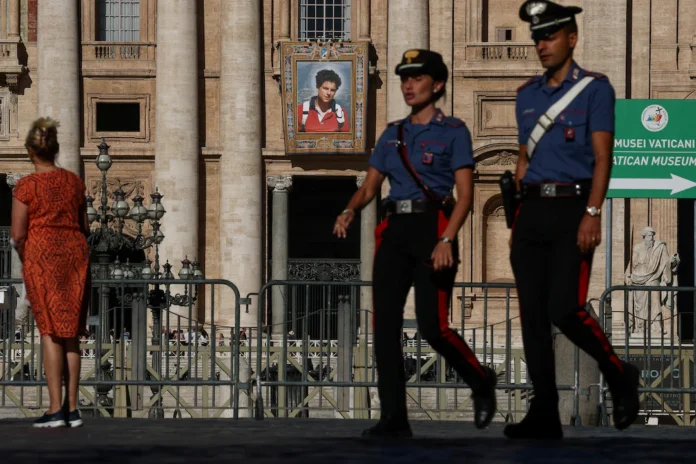Carlo Acutis, a British-born Italian teenager who died of leukaemia in 2006 at the age of 15, will be canonized this Sunday in St. Peter’s Square, becoming the first saint of the millennial generation.
Pope Leo will lead the ceremony, his first canonization since succeeding Pope Francis, in what is expected to draw tens of thousands of the faithful. Acutis, celebrated for his use of technology to promote Catholic faith—including creating websites showcasing Eucharistic miracles—has become an inspirational figure for youth.
Leo will also canonize Pier Giorgio Frassati, a young Italian man who was known for helping those in need and died of polio in the 1920s.
Acutis’ mother, Antonia Salzano, told Reuters earlier this year that the heart of her son’s appeal to Catholic youth was that he lived the same life as others who were teenagers in the 2000s.
“Carlo was an ordinary child like (others). He used to play, to have friends, and to go to school. But his extraordinary quality was the fact that he opened the door of his heart to Jesus and put Jesus in the first place in his life.”
“He used this skill to spread the good news, the Gospel,” she added. “He wanted to help people to have more faith, to understand that there is an afterlife, that we are (pilgrims) in this world.”
Being made a saint means the Church believes a person lived a holy life and is now in Heaven with God.
Other saints who died at a young age include Therese of Lisieux, who died at 24 in 1897 and was known for promoting a “Little Way” of charity; and Aloysius Gonzaga who died at 23 in 1591 after caring for victims of an epidemic in Rome.
As Acutis progressed along the Church’s official path to sainthood, his body was moved to a church in the hill town of Assisi in central Italy, where St. Francis was from, in line with Acutis’ last wishes.
The new saint’s final resting place, where Acutis is entombed with a wax mould of his likeness placed over his body, wearing his track top, jeans and trainers, has become a popular devotional site, attracting thousands of worshippers every day.
REUTERS with ANN





